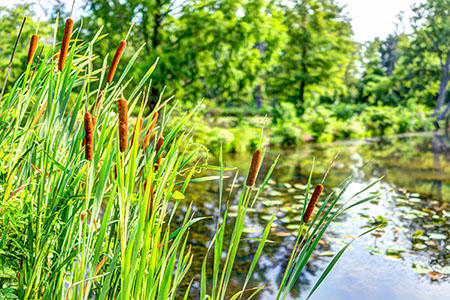New microbes discovered in the Mariana Trench, New Zealand rivers and humans
Posted on July 14, 2020 by Matt Bassett
Each month, the Microbiology Society publishes the International Journal of Systematic and Evolutionary Microbiology (IJSEM), which details newly discovered species of bacteria, fungi and protists. Here are some of the new species that have been discovered and the places they’ve been found.
This month new microbes were reported in the deepest part of the ocean; the Mariana Trench. Sphingomonas profundi was isolated from a marine sediment sample collected on the TS01 hadal trench cruise by the R/V Tan Suo Yi Hao. The Mariana Trench is the deepest oceanic trench measuring about 2,550 km in length and 69 km in width, estimates of depth vary from between 10,984 km to 11,034 km. This wasn’t the only microbe discovered in the depths of the ocean, researchers discovered Marinobacter salinexigens in the Mariana Trench. Unlike the previous discovery, this microbe was found in the water column, from a water sample collected at a depth of 9,600 m.

In addition to deep sea trenches, a microbe was also found on a seamount this month. Seamounts are large underwater mountains that rise from the ocean floor but do not reach to the water's surface. Seamounts are generally formed from extinct volcanoes. Researchers discovered Flavobacterium profundi on the surface of a marine sponge isolated from a seamount in the tropical western Pacific. The marine sponge was collected at a depth of 288 m.
Several microbes were found on animals this month. Researchers in New Zealand discovered Campylobacter novaezeelandiae on bird species and in rivers. The birds were non-native mallards and starlings. Campylobacter species are frequently associated with the gastrointestinal tracts of birds, particularly chickens, but have also been detected in wild birds ranging from albatross to zebra finch.

In addition to birds, Tibetan Antelope were the source of several new microbes. One research group discovered four new species; Actinomyces wuliandei, Corynebacterium liangguodongii, Corynebacterium yudongzhengii and Oceanobacillus zhaokaii, and another group discovered Nocardioides jishulii. Both species were isolated from faecal samples.
Plants were also the source of new microbes this month. Researchers isolated Flavobacterium alkalisoli from the rhizosphere soil of Suaeda salsa. Suaeda is a genus of plants known as seepweeds and sea-blites. They are normally found in habitats with a high salt content, for example coastal salt-flats. Researchers also discovered Nonomuraea typhae, a new species of endophytic actinomycete. The new species was isolated from the root of cattail pollen (Typha angustifolia).

Researchers also found two new microbes in humans this month. Tannerella serpentiformis was isolated from the mouth, this genus only has one other species (T. forsythia), which was discovered in 1986. The second species has been named Parapseudoflavitalea muciniphila, and was isolated from a peritoneal tumour, a rare form of peritoneal cancer that originates in the appendix.

